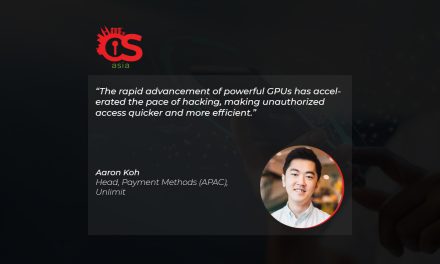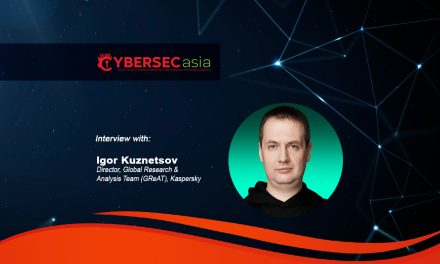With billions of dollars lost to financial scams across the region in recent years, traditional finance institutions are relooking their security frameworks – can AI-enhanced blockchain help?
One possible way forward for traditional finance would be to turn to the technology that’s increasingly powering digital transactions in the modern economy – blockchain.
We’re not talking about cryptocurrencies or digital currencies, which have recently seen their share of fraud and cybersecurity woes.
Within the relatively new area of blockchain technology, there is a growing movement to create an even more secure platform – through the integration of artificial intelligence (AI) into blockchain platforms.
To learn more about how AI-enhanced blockchain technology can address security concerns in the traditional finance space, CybersecAsia sought out some insights from Ilya Filinykh, Chief Operating Officer, GBC.AI:
What are some use cases of blockchain technology in traditional finance organizations? Is blockchain the answer to the financial sector’s security woes?
Filinykh: Blockchain has the potential to optimize many functions within a traditional finance organization. For example, in payments, the technology can facilitate faster payments at lower fees than traditional banks through a decentralized ledger.
Another use case of blockchain technology is clearance and settlement systems. Distributed ledgers can reduce operational costs and bring us closer to real-time transactions between traditional financial institutions.
Blockchain technology can also be used in the loan and credit industry. By removing the need for gatekeepers, blockchain technology can make it more secure to borrow money and provide lower interest rates.
Another exciting use of blockchain technology is in the area of fundraising – IDO (Initial Decentralized Exchange Offering) or IEO (Initial Exchange Offering) are experimenting with a new model of financing that unbundles access to capital from traditional capital-raising services and firms.
There are plenty of other use cases, but in general, what blockchain does is reduce boundaries, improve transparency, and support automation. The technology will profoundly alter the way in which international trade is undertaken. Research by Commerzbank predicts that Distributed Ledger Technology and blockchain technology could reduce trade finance operating costs by 50% to 80% and improve turnaround times by three-to-four-fold. The barriers removed could lead to more than US$1 trillion in new trade over the next decade.

No technology, including blockchain, is foolproof where security is concerned. How is AI making blockchains more secure, particularly when applied to the financial sector?
Filinykh: Consider this analogy – imagine buying a fish tank with the concept that you’d be using it to store a certain amount of water for a particular breed of fish. But over time, you keep changing the type of fish and décor in the tank, as well as the volume, salinity and temperature of the water, adding new equipment, and all while moving the tank to different parts of the house. No matter how robust the tank may have been at the beginning, all the changes will add defects over time, which eventually leads to a structural failure.
Similarly, blockchain is being so rapidly adopted, scaled and used in a rapidly changing environment that security flaws are not a possibility, but an eventuality. That’s where AI in the blockchain comes in.
Implementing AI into the core of blockchain networks makes them pre-active and self-aware. By being able to identify changes and mitigate problems, AI is able to give the blockchain networks platforms the ability to “self-heal” and be better optimized – leading to more effective and secure platforms.
Furthermore, combining artificial intelligence within the blockchain enables businesses to identify potential security risks or issues far quicker than before. This will be particularly important as the use of blockchain will rapidly scale up and evolve, particularly in response to changing regulation in this space.
How can AI combat fraud that is rooted in social engineering techniques? How does AI’s pattern-recognition capabilities give financial institutions more tools to combat fraud and bad actors at multiple levels?
When we look at how threat actors use social engineering, many turn to trying different techniques and playbooks – and particularly for cyber criminals targeting consumers, deploying these techniques at scale is crucial because of the small percentage of people who fall victim.
The fact that there’s typically a large volume and “preset” techniques the criminals employ is the weakness here – as it creates patterns in the system. These patterns are what AI’s can detect and learn from, particularly given AI’s ability to process large volumes of data.
That being said, a powerful combination that we’re already seeing now is AI and human agents working closely today. Typically, we’ll see AI solutions flagging anomalous transactions to human agents, who will vet and flag if the transaction is problematic – which creates a feedback loop with the AI – and eventually leading to more accurate systems.
These systems can of course work at multiple levels – whether it’s between communication lines between banks and consumers, inter-bank communications, or even within intra-bank systems.
How are industry bodies like Guardians of the Blockchain (GBC.AI) and the International Digital Asset Exchange Association (IDAXA) accelerating the adoption of blockchain across multiple industries, while leveraging AI to ‘supercharge’ the technology?
GBC.AI and IDAXA are working in tandem to supercharge this technology. GBC.AI brings the vision, innovation and expertise to integrate AI into blockchain technology – specifically by collaborating with technology partners across verticals and at all levels of the blockchain technology stack. These collaborations lead to not just “projections” of the potential of AI, but rather real-world implementation of these solutions.
IDAXA, for its part, communicates the merits of applying artificial intelligence into blockchain technology to regulators and its members across Industry, while proliferating the technology adoption across the ecosystem.
The combination of innovation, networking and advocacy will allow for the acceleration of AI technology wherever blockchain is deployed, with the benefits being applied in commerce, social networking, banking, supply-chain, healthcare, insurance, gaming, DAO’s, DeFi, and infinitely more applications.

















